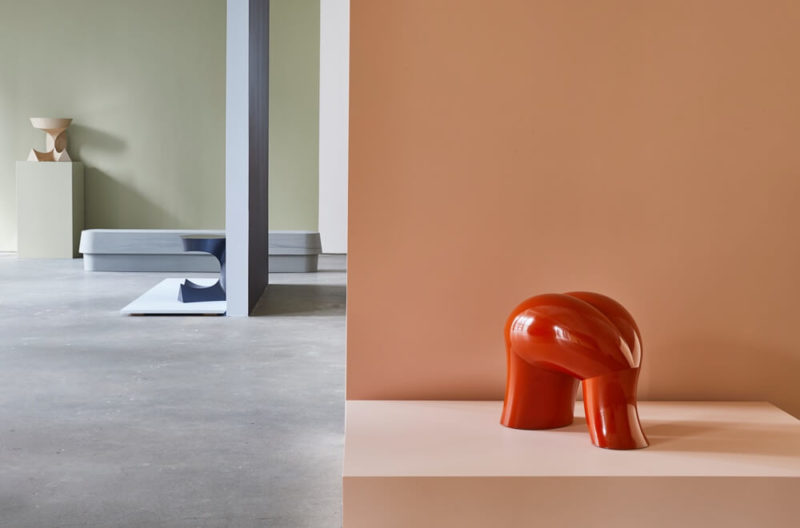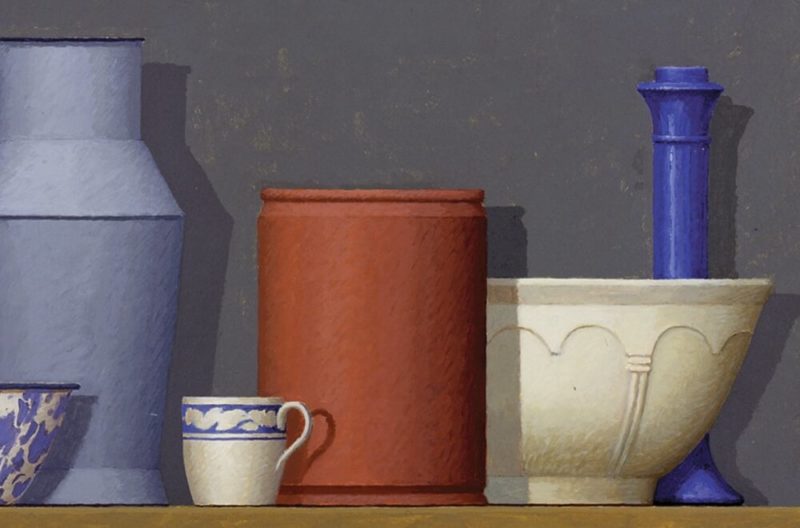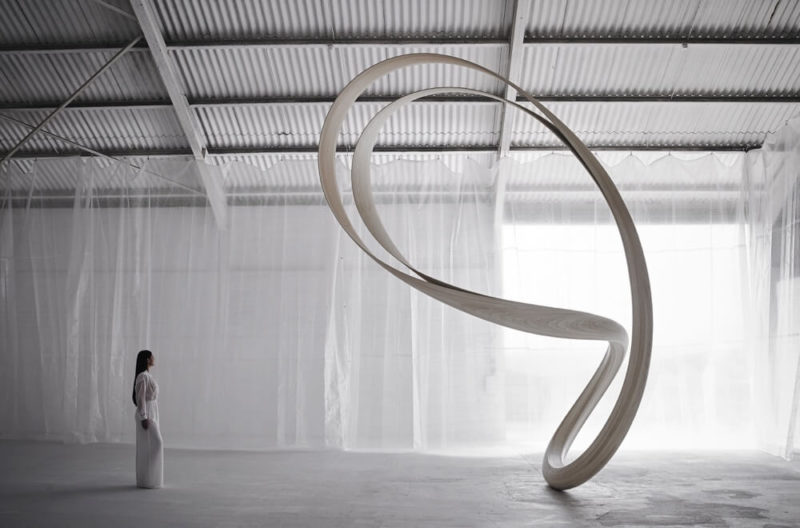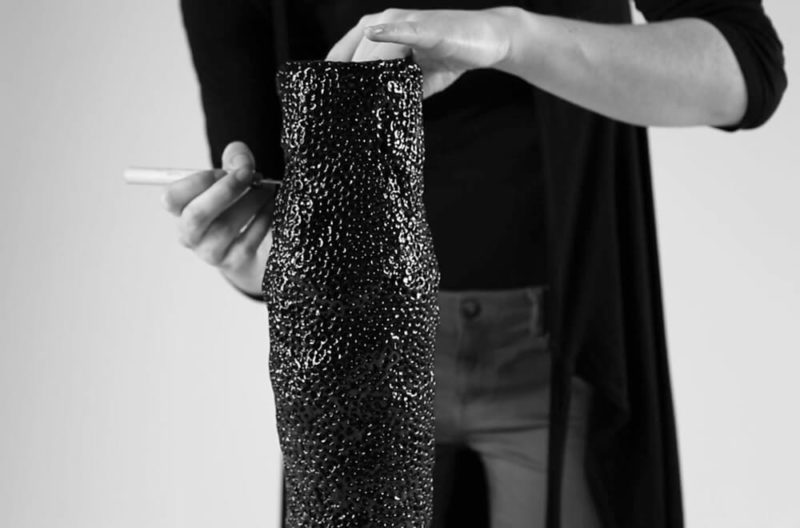Valentin Loellmann: designer
As Loellmann makes his debut at Twenty First Gallery in New York, Judith Gura charts his stellar rise.
VALENTIN LOELLMANN DOESN’T like to do what’s expected of him. Nor does he like to follow the rules. “I’m happy doing things that you can’t do,” he says. Despite his refusal to toe predetermined lines, this unconventional designer has built a flourishing practice, and a devoted European clientele, for seductive pieces that balance provocatively between sculpture and furniture. Now Americans can see the work for themselves in his debut US exhibition that opened on the 31st of May at Twenty First Gallery in New York City.

Installation view, ‘Valentine Loellmann’ exhibition
COURTESY: Twenty First Gallery
Born in the South German countryside, the 36-year-old (who retains his schoolboy looks and enthusiasm), moved to the Netherlands to study industrial design at the Maastricht Academy of Fine Arts & Design (“I hadn’t heard of Eindhoven,” he says), and at first thought the Dutch too easy-going for someone serious about design. Having travelled often to Japan with his father, a ceramic artist, and drawn to the dedication of Japanese designers and their use of materials to create atmospheric effects, he considered relocating there. A detour to Bangkok for another industrial design program convinced him that the less dogmatic environment of Europe would better suit him, and he returned to Maastricht to finish his degree.
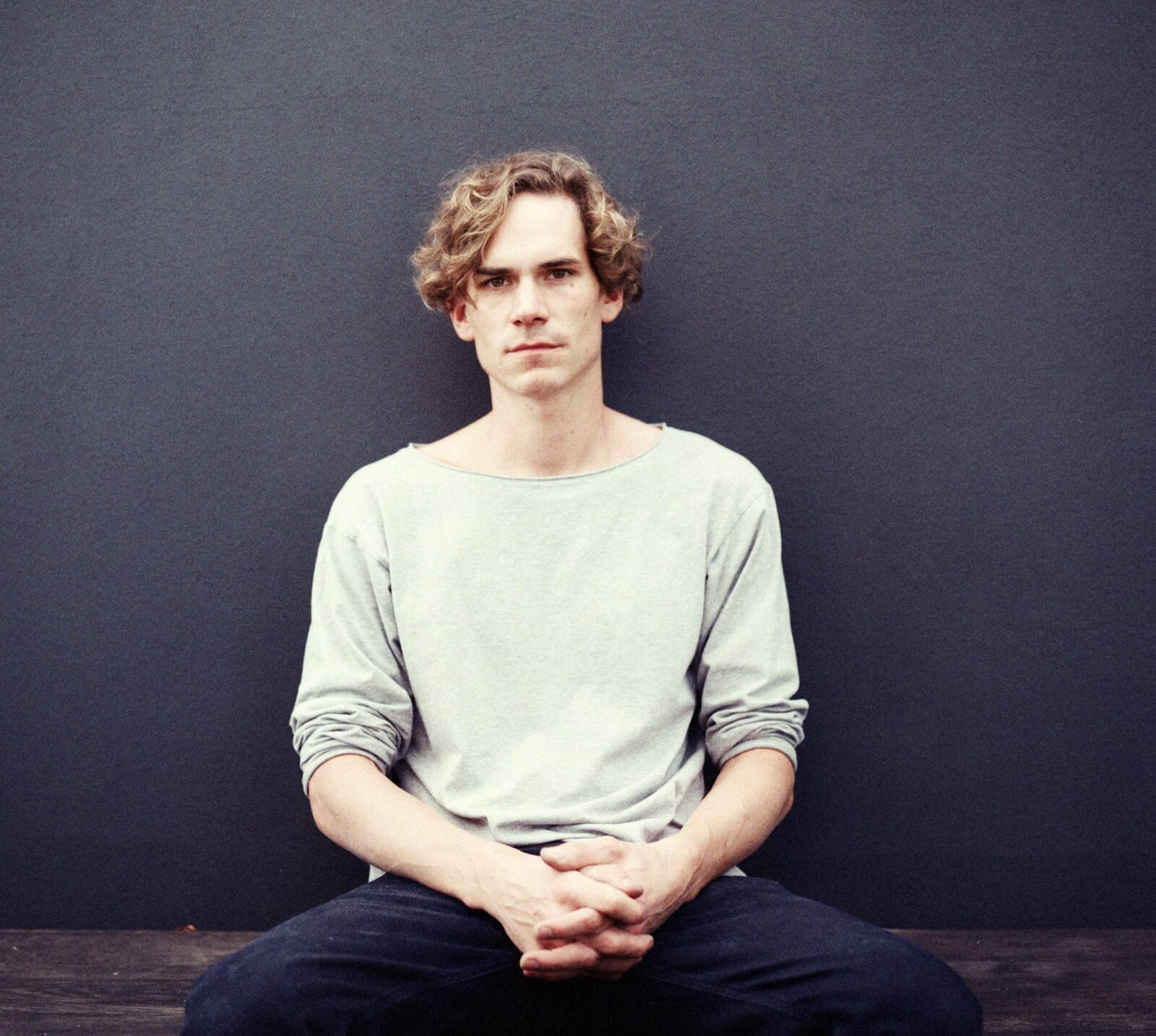
Valentin Loellmann
COURTESY: Jonas Loellmann
Things didn’t go smoothly at first. He had begun designing furniture while still in college, finding discarded pieces and reconfiguring them, and his graduation project, ‘Past Memories’ (including a cabinet made from an assemblage of old drawers transformed into something new) was rejected by the judging committee. Their verdict was refuted when two executives from American retailer Anthropologie saw the project and purchased it to feature in a 2010 ‘Going Dutch’ exhibition at the store in Rockefeller Center. It was an epiphany for the young designer. “I realised that the world is bigger than just Maastricht, and I could go out and make good work anywhere.” Reassured that he could find clients to buy what he wanted to make, he rented work space, first sharing and then taking over a studio which he compulsively rebuilt to his own vision. “I touched every corner,” he says.
He found clients, or they found him, through exposure at design shows — Dutch Design Week on his own, then Milan with others from his college — making pieces with whatever materials he could afford. An early stool, he recalls, was assembled from carefully-selected tree branches that he found in the woods and fastened together, filling in the joints with a composite. He learned financial and business practices as he went along, with coaching from clients and admirers who saw potential in the young designer and invested the time to help him “fill in the missing parts” in his education.
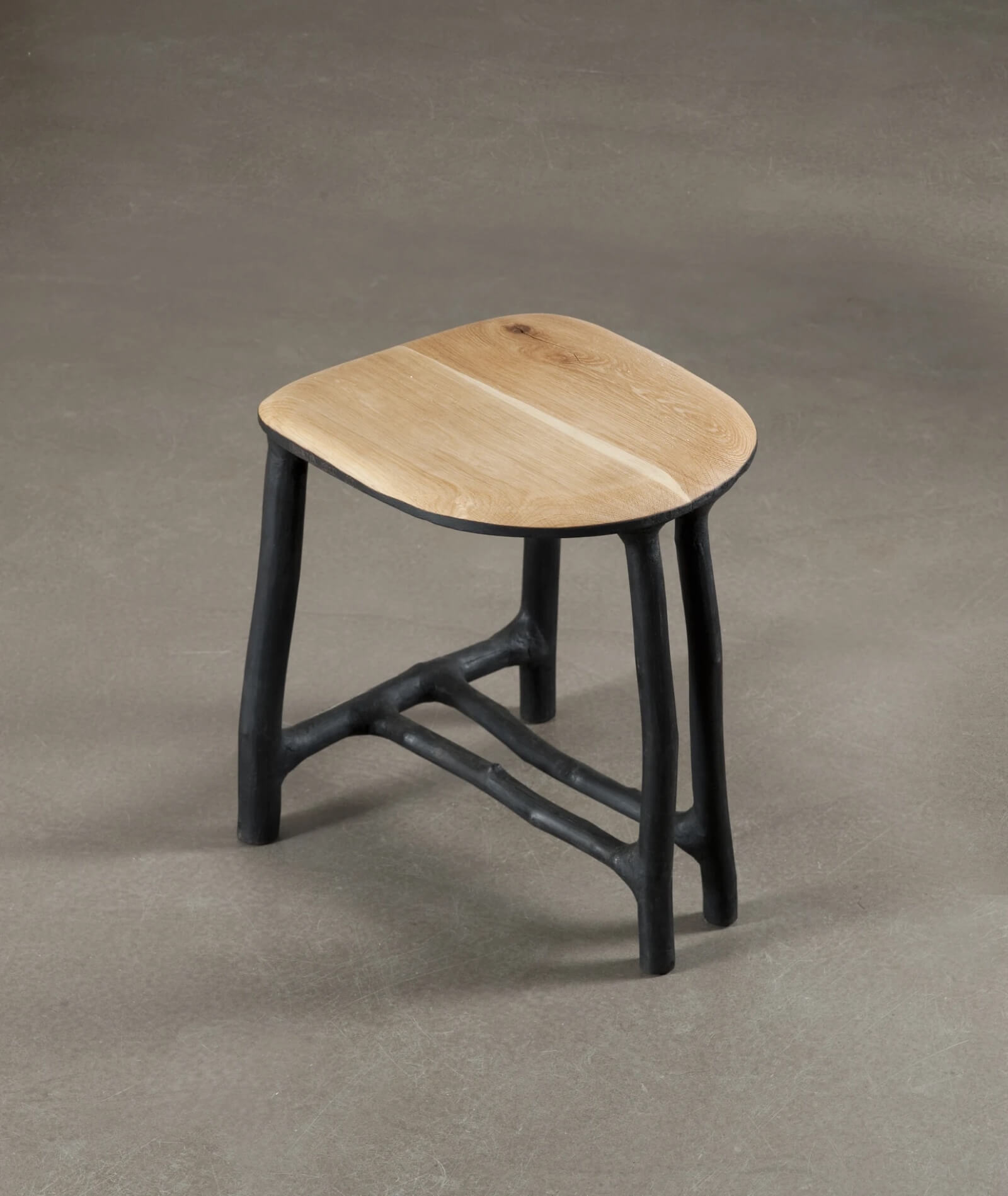
Valentine Loellmann, ‘Fall/Winter’, stool, 2012
COURTESY: Valentin Loellmann studio
Every object he creates is a product of self-expression rather than conscious design. He never sketches, nor does he have an idea in mind, but starts with his hands on the material
Paris dealer Marie-Bérangère Gosserez discovered him just after he graduated, and shortly after she had opened Galerie Gosserez in Paris’ Marais district. The two have been working together since 2010 and the relationship has prospered, despite Loellmann’s refusal to accommodate client requests for custom orders. His work has been featured in a number of important international exhibitions, including PAD in London, FIAC in Paris and Design Miami in Basel. Within just two years, he was busy enough to expand his original studio space, and in 2015 formed his company and brought in assistants, now numbering eight. They are a polyglot group of mixed nationalities and diverse skills to complement his own, though none work independently of Loellmann, who insists on being hands-on with everything that bears his name.
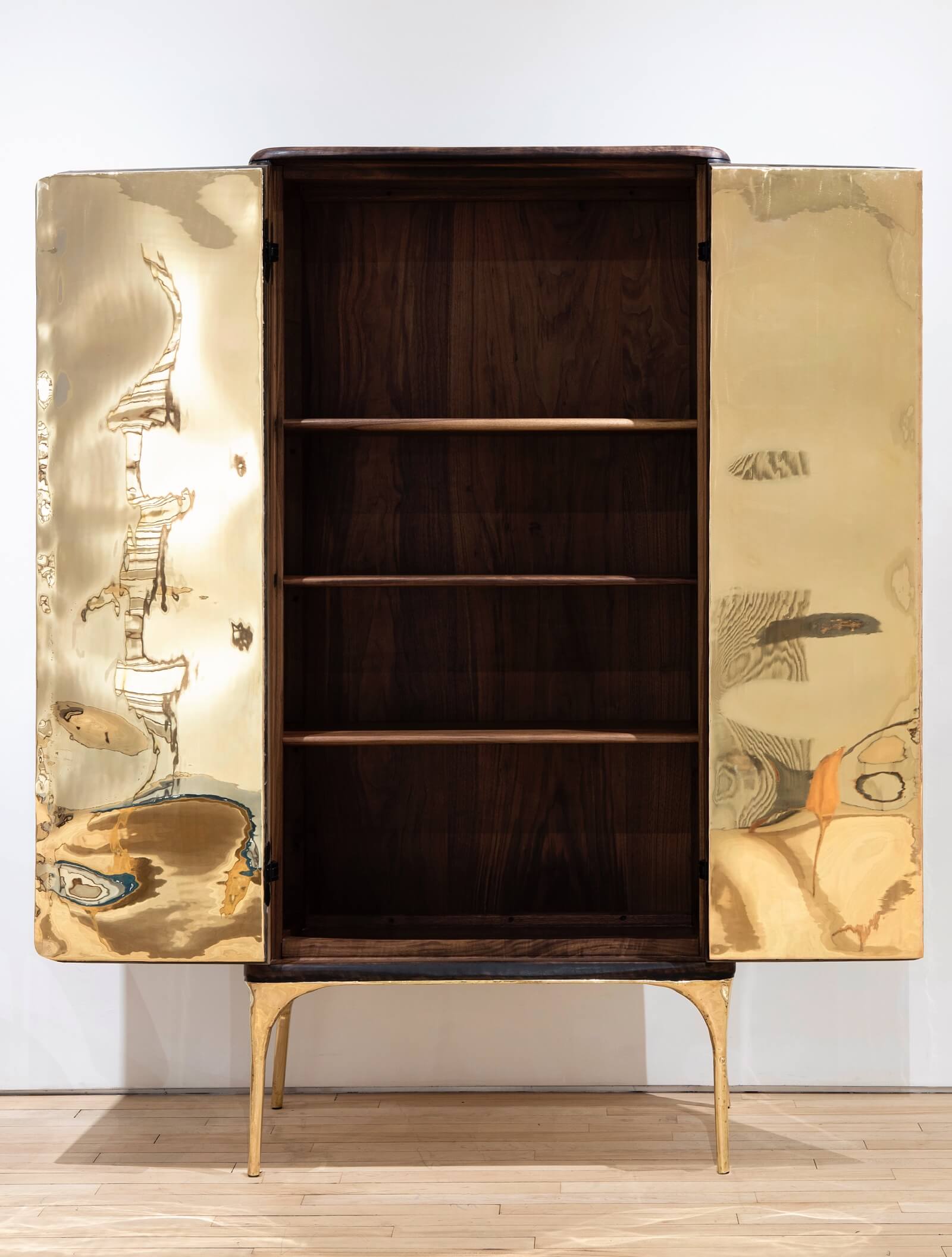
Valentin Loellmann, ‘Cabinet; 2019
COURTESY: Twenty First Gallery
ENJOYING HIS EXCURSIONS to various cities for design projects and art installations, he considered relocating to a bigger metropolitan area, but after his daughter was born two years ago, decided to put down roots in Maastricht, maintaining home and studio there and travelling wherever he was needed for work. “Surroundings are the most powerful tool,” he believes, and he accordingly created a unique environment for his family home: restoring, rebuilding and repurposing a historic former stable house with his own handcrafted cabinetry, furniture and staircase. He has also designed a highly personalised work environment, shaping and carving walls and designing furniture for the atelier. Having always wanted to design a garden, he tore up the floor and installed a 60-square-meter botanical garden in the middle of the space (one of the many things he’s been told couldn’t be done). Some trees were lost, but most are thriving, and a kitchen was installed at treetop-level.
Once an idea is expressed and the object finished, he has no wish to repeat the experience, so every work is unique
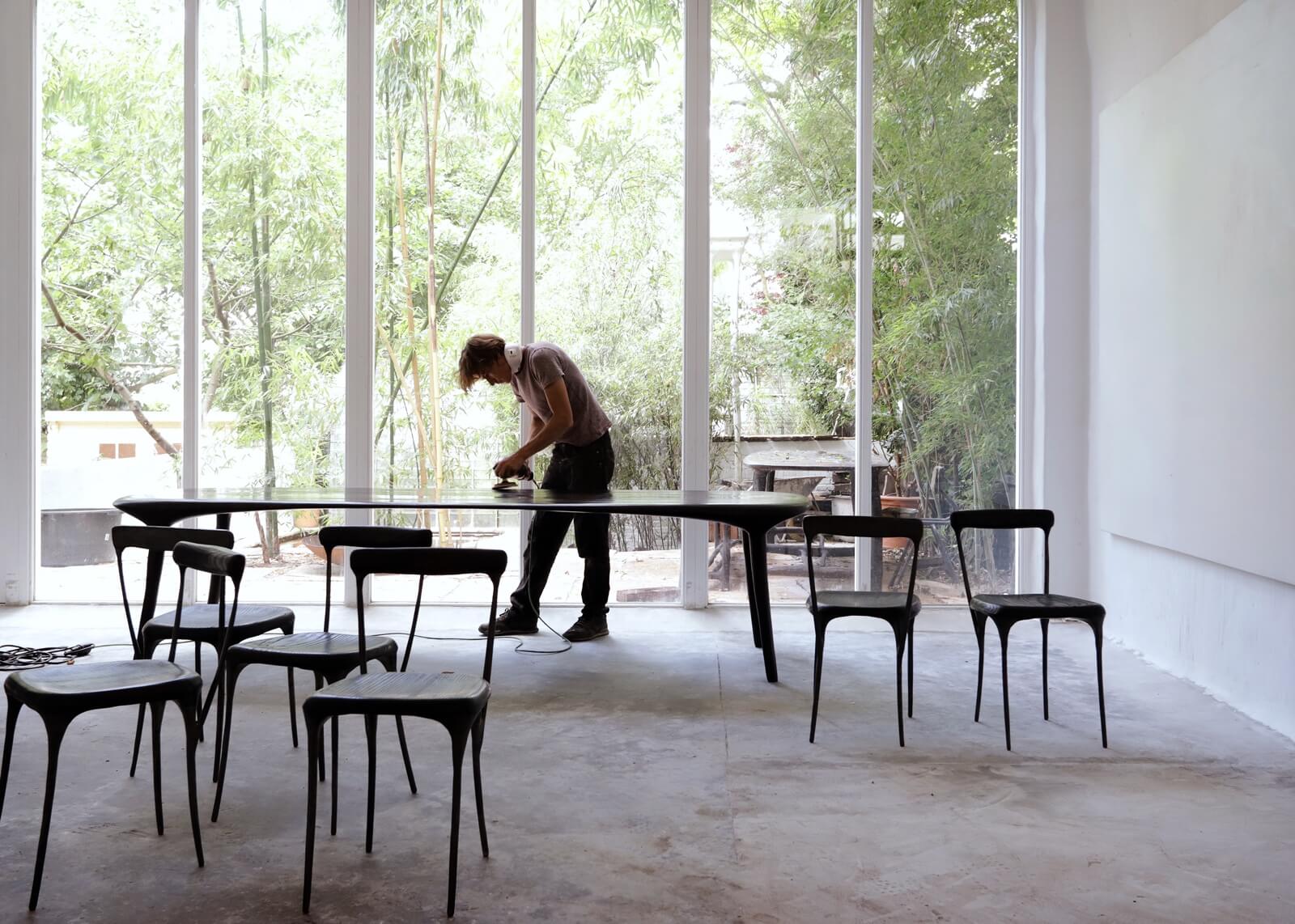
Loellmann at work in his studio in Maastricht
COURTESY: Jonas Loellmann
Now Loellmann and his staff have broken ground on a challenging new project, a historic 1920 listed building by Dutch architect Jan Gerko Wiebenga, which he acquired with the help of the city government after a two-year search. The three-story Brutalist structure, an abandoned coke factory, has a tower with two additional floors (a total expanse of 2,400 square meters), and will hold his expanded studio, staff and equipment. Its most distinctive feature will be another 4,200 square meters of botanical garden and park space, free and open to the public, a prospect that clearly excites him. “Why wait until I’m dead to have a public space in my name?” he says. Completion of the project, which requires extensive official permissions and paperwork, is slated for 2025. The financing will come from sales of his furniture.
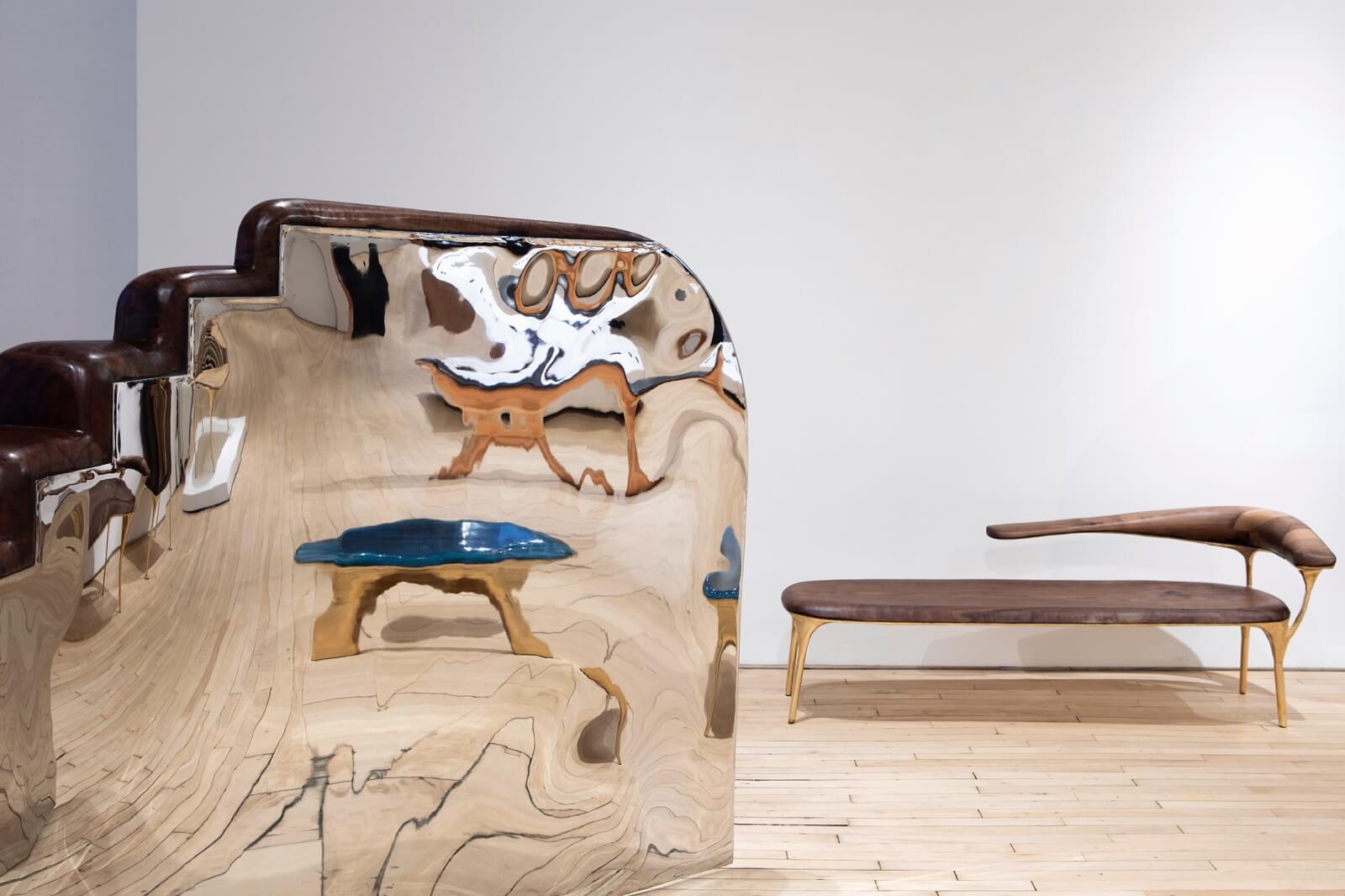
Valentin Loellmann, ‘Steps 1 x 12’, 2018 (left); ‘Brass and Walnut Lounge Chair’, 2019 (right)
COURTESY: Twenty First Gallery
Busy on several fronts, Loellmann had no thoughts of travelling to America, but Marie-Bérangère Gosserez had visited a New York design show several years ago and met Renaud Vuaillat, whose Twenty First Gallery opened in New York in 2006, and focusses on unique and custom work by European artists. She decided that the American market would respond to work that fell in the penumbra between art and design, and that Vuaillat’s gallery was the right venue. In a rare moment of accommodation, Loellmann agreed – “I came because she told me to.”
LOELLMANN BELIEVES IT’S the obligation of an artist to make work that others can enjoy. But in the process of making, he pleases nobody but himself. Every object he creates is a product of self-expression rather than conscious design. He never sketches, nor does he have an idea in mind, but starts with his hands on the material. “When I begin a piece, I don’t know what it will be,” he says, “the only way to create it is to just do it.” Once an idea is expressed and the object finished, he has no wish to repeat the experience, so every work is unique. (Clearly, profit is not his motivating impulse.) The only exception has been a wood-and-brass ladder; the first for himself, then several others to accommodate repeated entreaties, though no two are alike. In the current exhibition, a 2.8 metre-tall ladder leans against a wall, more sculpture than functional object. One is drawn to touch it, but climbing would seem a violation.
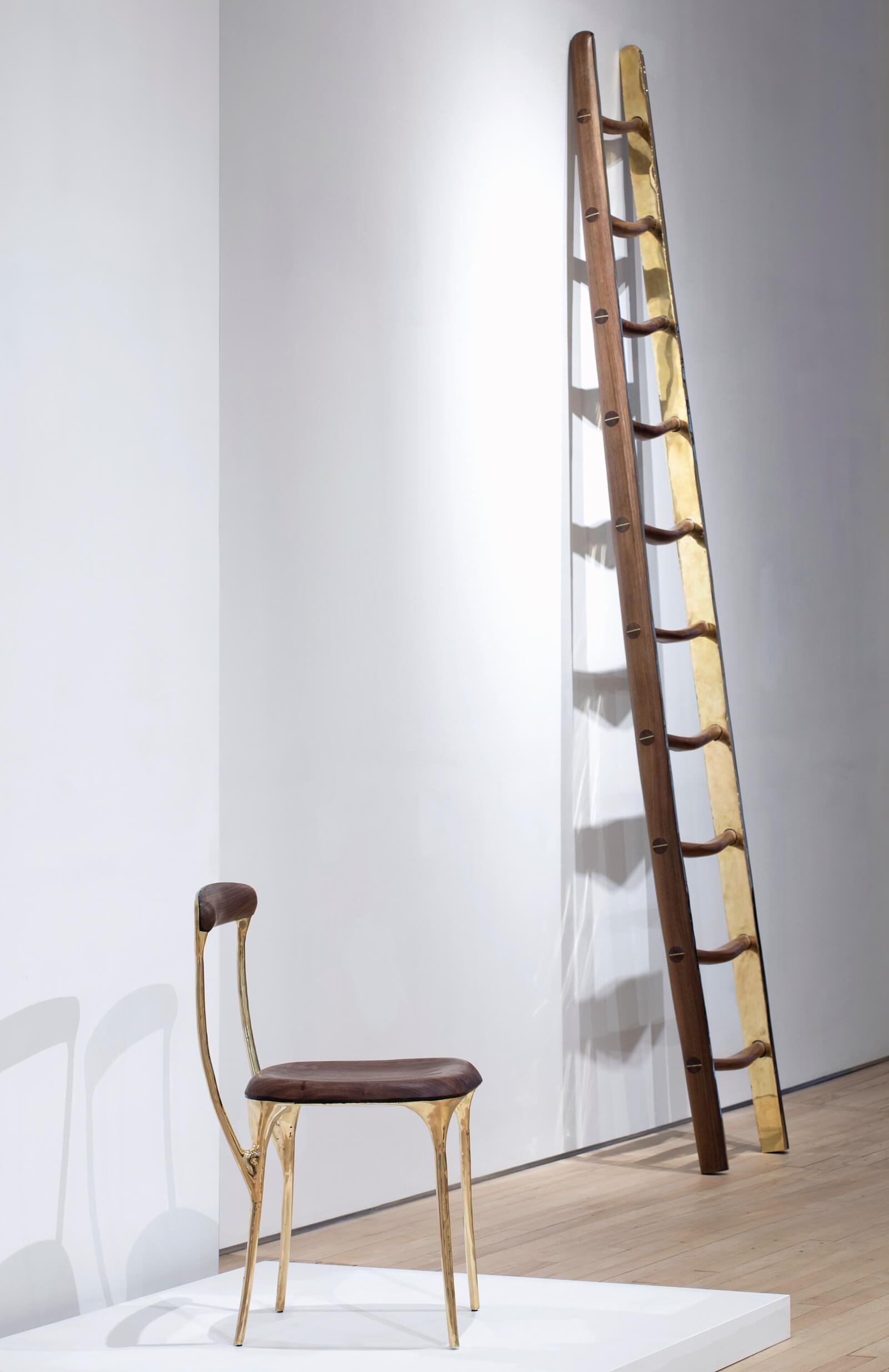
Valentin Loellmann, ‘Brass Chair’, 2019 (left); ‘Steps 1 x 10’, 2019 (right)
COURTESY: Twenty First Gallery
Working in the shadowy space between the worlds of art and design, Loellmann is a doer rather than a director. He permits assistants to work on detailing and finishing only after he has done the initial welding and shaping of every object. He cannot understand how some other designers allow their work to be fabricated by contractors or a gallery. “I want to be 100% responsible for everything that leaves the studio.”
His designs are seductively organic, often using unusual combinations of materials, including brass or copper welded onto wood, which he was originally told was not possible. The satin-smooth wood surfaces of Loellmann’s furniture have visible grain and subtle texture, brass legs and door trim are welded and hammered into shape instead of being cast or folded, and unforseen details emerge in the working process — a nick here, a bump there. The deliberate imperfection of each piece is a reminder of the hands that built it. “It’s not about making a perfect piece … it’s just about expressing an idea, ” he explains.
There are only a dozen objects in the new exhibition, set simply on the hardwood floor of the white-walled gallery, but each commands attention. There is a shapely sideboard framed in charred wood with door-fronts of patinated, polished copper; a seductively slender dining-table and waxed-wood benches that appear almost too delicate to sit on, a wood-and-brass chair that looks cast but was shaped entirely by hand (and has the irregularities to prove it). There, too, is the aforementioned sculptural ladder, “I made the first one to free myself from doing furniture,” Loellmann says. He views the need to be functional as distracting from the purpose of a piece that is intended as emotional expression. The standout object in the show is unquestionably the most expressive, though it’s admittedly also the largest: a traffic-stopping stairway-to-nowhere, a 40 cm high x 260 cm wide curve of polished sheet steel with wood steps that could easily be installed in an art museum or gallery, though it could, if a client insists, be pressed into service as seating or room divider.
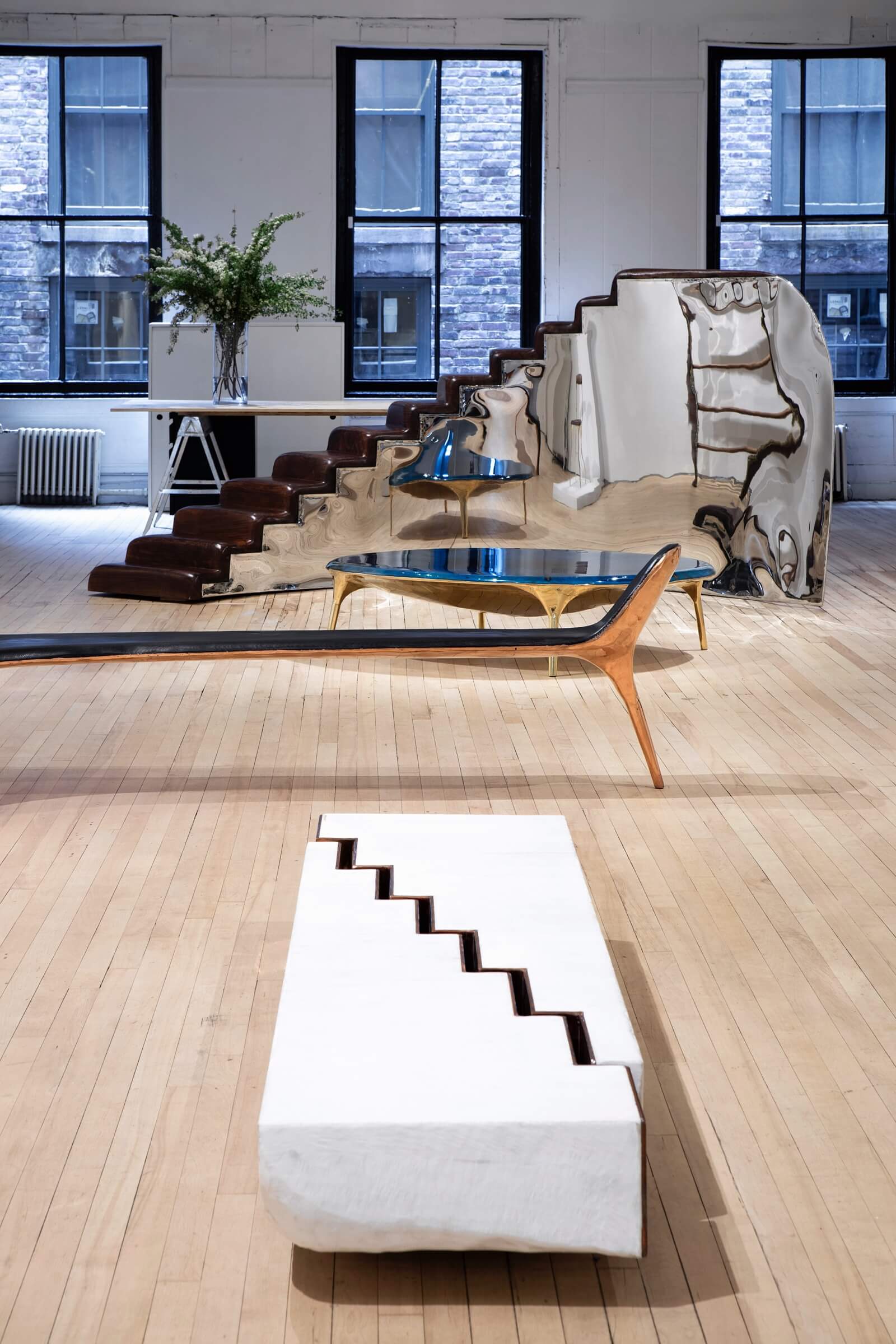
Valentin Loellmann, ‘Steps 2 x 7’, low table 2019 (foreground); ‘Steps 1 x 12’, 2018 (background)
COURTESY: Twenty First Gallery
Valentin Loellmann believes that his pieces contain his energy, and indeed they seem to be poised for movement. “My dream is to create something that’s not there … you’d approach it and you’d feel the sheer energy.” Hearing his enthusiasm, and seeing what he’s accomplished so far, one is inclined to believe he’ll find a way to do just that.
Valentin Loellmann’s exhibition will remain on view at Twenty First Gallery until 19th July. Prices range from $11,000 – $80,000.
Twenty First Gallery – limited edition furniture and XX1st Century Decorative Arts.




